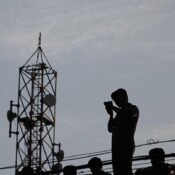
DRC opposes the United States’ labeling of child labor in mines
However, the Congolese government contended that the report “deliberately disregards local realities and undermines the international reputation of the Congolese mining sector.” The Congolese government issued a press release in which it denounced the blacklist’s inclusion of Congo’s cobalt.
“It raises concerns regarding the efficacy of international compliance control and supply chain due diligence mechanisms that are rigorously enforced by independent international structures that collaborate directly with Western multinationals (European and American) to consider the interests of end users,” the statement stated. Such mechanisms are recognized in terms of human rights, labor, and safety.
The Democratic Republic of the Congo (DRC) is the world’s largest producer of cobalt, accounting for approximately 70% of the global deposits of the mineral that is essential for the production of batteries for electric vehicles.
The Department of Labour’s list may now be consulted by civil society organizations that are interested in emphasizing labor rights violations in global value chains, as well as by companies that are working to prevent and mitigate such violations.
“In 2023, an Ilab-funded study revealed that forced labor was prevalent among workers in industrial and artisanal mines, which led to the inclusion of DRC cobalt in the list of products subject to forced labor.”
The research emphasized the presence of compelled labor indicators, such as excessive overtime, hazardous work, dismissal, unpaid wages, fines, debt bondage, and other adverse human rights consequences. The report also briefly mentions that the cobalt industry in the Democratic Republic of the Congo is primarily controlled by large Chinese-owned mines.
The Congolese government has reportedly implemented a number of reforms to enhance the regulation of the sector. These reforms include the establishment of the General Inspectorate of Mines, the revitalization of the Authority for the Regulation of Subcontracting in the Private Sector (ARSP), the operationalization of the Authority for the Regulation and Control of Strategic Mineral Substances Markets (Arecoms), and the promotion of transparency in supply chains and membership in international initiatives such as the Extractive Industries Transparency Initiative (Eiti).
“Entreprise Générale du Cobalt, established in 2019, is engaged in the implementation of rigorously ethical, responsible, and transparent measures in cobalt mining in accordance with Congolese laws and international standards in the field to make artisanal mining viable, thereby addressing child labor and forced labor in informal, and therefore illegal, artisanal mining.”
Only in 2023 did the Générale du Cobalt, which is responsible for the supervision of artisanal cobalt production, become operational. It has encountered obstacles in its efforts to fully comprehend the intricacies of artisanal cobalt production. Éric Kalala, the managing director, acknowledged that he was unaware of the precise number of artisanal cobalt laborers.
The Service d’assistance et d’encadrement des mines artisanale et à petite échelle (Saemape), which is responsible for the supervision of artisanal and small-scale mining in the DRC, is also unaware of the number of artisanal miners.
Even though it is legitimate, artisanal mining is a significant source of disorder in the country. Operators occasionally encounter difficulty distinguishing between child labor and apprenticeship, as the majority of mining operations are family-owned enterprises.
President Félix Tshisekedi and his officials have contended that the conflict in the Democratic Republic of the Congo (DRC) is being incited by multinational corporations and armed groups with the intention of exploiting the country’s mineral resources.
This may elucidate the presence of armed organizations in the mining regions. Bintou Keita, the UN Secretary General’s Representative in the DRC, has reported that rebels in the eastern region have established a consolidated control over the Rubaya coltan mining region. This includes the imposition of a tax on production, which is estimated to generate $300,000 in monthly revenue.
The world’s supply of tantalum, which is generated by artisanal miners, is more than 15% accounted for by the trade in minerals from the Rubaya region.
The source of massacres in Congo is artisanal mining by armed organizations, as evidenced by numerous UN reports. Artisanal mining is “a reign of chaos,” according to Donat Kambola, a civil society activist in Kolwezi, the cobalt heartland of the DRC, as reported by The EastAfrican.
“The situation is regrettably bleak, despite the information we are provided, particularly in regards to the rise in revenues in the artisanal mining sector in the provinces.” However, these human rights concerns, including transparency and compensation, persist. That is why I am of the opinion that the evidence on the ground is, in fact, in opposition to any reform of the law. There has been no improvement in the sector. The perpetual issue is the failure to establish artisanal zones.
As a consequence, artisanal miners continue to invade industrial sites. Kambola contended that the identification of artisanal miners is the other issue.
In the Democratic Republic of the Congo, mining generates substantial financial resources that are leased to workers by influential political figures, occasionally in violation of legal procedures. He stated that politicians and miners are frequently associated or related.
He stated, “On the ground, there is chaos, as all the Chinese or Lebanese operators who are involved in the mining sector have their ‘umbrellas’ or protectors.”
All Categories
Recent Posts
Tags
+13162306000
zoneyetu@yahoo.com



